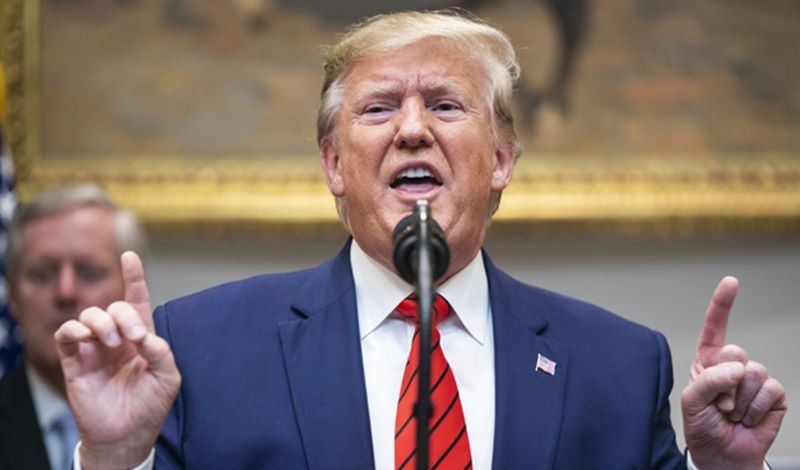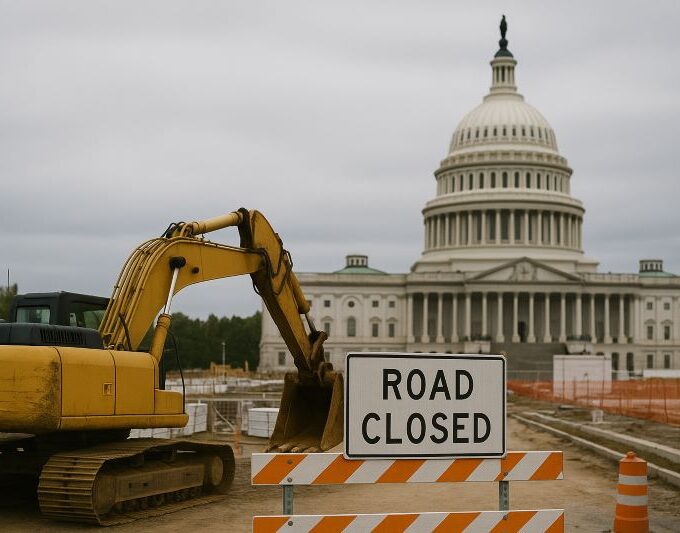It is less than a month before the second term of President-elect Trump of the United States begins. Recently, there have been constant reports that Trump intends to withdraw from the World Health Organization and the Paris Agreement, and Trump himself has threatened to withdraw from NATO. In the previous term, the Trump administration withdrew from at least 10 international organizations or agreements. Members of Trump’s team told experts that they intend to push Trump to announce the withdrawal of the United States from the World Health Organization on the day he is sworn in on January 20 next year. They also hope to speed up the process after the withdrawal procedure is initiated.
Trump Plans to Withdraw from The World Health Organization
Ashish Jha, former White House COVID-19 coordinator and dean of the Brown University School of Public Health, said that Trump’s transition team wanted him to withdraw from the World Health Organization on his first day in office because they believed that reversing Biden’s behavior on his first day in office in 2021 was symbolic.
In 2020, then-President Trump initiated the process of withdrawing from the World Health Organization. But the process was not completed. The Biden administration restarted its relationship with the agency on its first day in office. Jha believes that there are also some people in Trump’s team who want the United States to stay in the World Health Organization and promote reforms, but those who hold opposing views in the team have the upper hand in the debate. Jha believes that many people who are about to enter the core circle of the government do not trust the WHO, and they hope to symbolically indicate their withdrawal from the organization on the first day of Trump’s inauguration.
As far as individual countries are concerned, the United States is the largest donor to the WHO. From 2022 to 2023, the United States’ funding accounted for about 16% of the WHO’s overall funding. Lawrence Gostin, a professor at Georgetown University in the United States, said that the United States’ withdrawal from the WHO would have a “catastrophic” impact on global health. According to a resolution in 1948, as long as the president gives a year’s notice in advance and continues to pay dues that year, he can terminate the United States’ membership in the WHO without the consent of Congress.
The WHO has not yet commented on the news that Trump may continue to seek to withdraw from the WHO. However, WHO Director-General Tedros said on the 10th of this month that the WHO is ready to cooperate with the new US government.

Trump Plans to Withdraw from The Paris Agreement
Trump’s transition team has prepared a series of executive orders and announcements on climate and energy, including withdrawing the United States from the Paris Agreement again. Trump has repeatedly called climate change a “hoax.” On June 27, Trump also criticized the Paris Agreement in a debate with Biden in Atlanta, Georgia, calling the agreement “exploitation of the United States” and “a disaster.” On June 28, a spokesperson for Trump’s campaign team also said that if he wins the presidential election again in November, Trump will withdraw the United States from the Paris Agreement for the second time.
During Trump’s last administration, the United States officially withdrew from the Paris Agreement on November 4, 2020, a move that was widely criticized by the United States and the international community. On January 20, 2021, Biden signed an executive order on his first day in office, announcing that he would rejoin the Paris Agreement.
The Paris Agreement was reached at the Paris Climate Change Conference in December 2015. It is the second legally binding climate agreement after the Kyoto Protocol under the United Nations Framework Convention on Climate Change. The three together form the global climate governance pattern after 2020.
Trump Plans to Withdraw from NATO
On December 6, Trump accepted his first major television media interview after his victory in New York, revealing his main policy goals for his next presidency. Trump said in an interview that if the defense spending of US allies “does not meet the standards”, the US is absolutely likely to withdraw from the North Atlantic Treaty Organization. Trump said that if the allies pay the bills and treat the US fairly in his opinion, then the US will definitely stay in NATO. But if this is not the case, he will definitely consider withdrawing from NATO.
Only half a month later, Trump’s requirements for NATO countries’ defense spending have increased again. On December 20, Trump’s team informed European officials that it would require NATO member states to increase their defense spending to 5% of GDP. During his first presidency, Trump repeatedly accused some NATO allies of taking advantage of the United States and failing to fulfill their commitment to spend at least 2% of their GDP on defense. He therefore threatened to withdraw from NATO many times.
Regarding Trump’s threats to withdraw from NATO, Trump’s statement is more like a means of intimidation and blackmailing allies. The United States is unlikely to actually withdraw from NATO, but the new US government to be led by Trump is likely to reduce the investment of resources and troops in NATO, and then ask European allies to share more. Putting “America First” within NATO may cause allies to be at odds with the United States.
Important International Organizations or Agreements That Trump Withdrew from
In addition to the World Health Organization and the Paris Agreement, during Trump’s first term, the United States announced its withdrawal from several important international organizations or agreements:
Trans-Pacific Partnership Agreement (TPP): This agreement is a multilateral free trade agreement led by the United States and negotiated by 12 countries including Japan. At the end of 2009, then-President Obama announced his participation in the negotiations. However, Trump believes that TPP will “destroy” the US manufacturing industry. On January 23, 2017, just three days after taking office, Trump signed an executive order announcing the United States’ withdrawal from the agreement.
UNESCO: On October 12, 2017, the Trump administration announced its withdrawal from UNESCO, citing the increasing arrears of dues by the United States and UNESCO’s “anti-Israel bias.” In 2023, UNESCO will fully restore the United States’ membership.
JCPOA: In July 2015, Iran and the P5+1 reached a comprehensive agreement on the Iranian nuclear issue. Under the agreement, Iran pledged to limit its nuclear program in exchange for the lifting of sanctions by the international community. In May 2018, Trump announced that the United States would withdraw from the Iran nuclear deal and re-impose sanctions on Iran that were exempted from the Iran nuclear deal.
United Nations Human Rights Council: In June 2018, Trump announced his withdrawal from the United Nations Human Rights Council, saying that the council was “biased” against Israel and “failed to effectively protect human rights.” In 2021, the United States returned to the United Nations Human Rights Council.
Intermediate-Range Missile Treaty: In October 2018, Trump announced that the United States would withdraw from the Intermediate-Range Missile Treaty and accused Russia of long-term violations of the treaty. In August 2019, the United States officially withdrew from the treaty. The United States and the Soviet Union signed the Intermediate-Range Missile Treaty in December 1987, the main content of which is to stipulate that the two countries will no longer possess, produce or test land-based cruise missiles and ballistic missiles with a range of 500 kilometers to 5,500 kilometers.
The United States’ withdrawal from a series of international organizations is mainly a measure taken by the Trump administration to manage the domestic deficit in the United States, and the United States’ anti-globalization measures have undoubtedly increased the difficulty of political cooperation in global governance.












